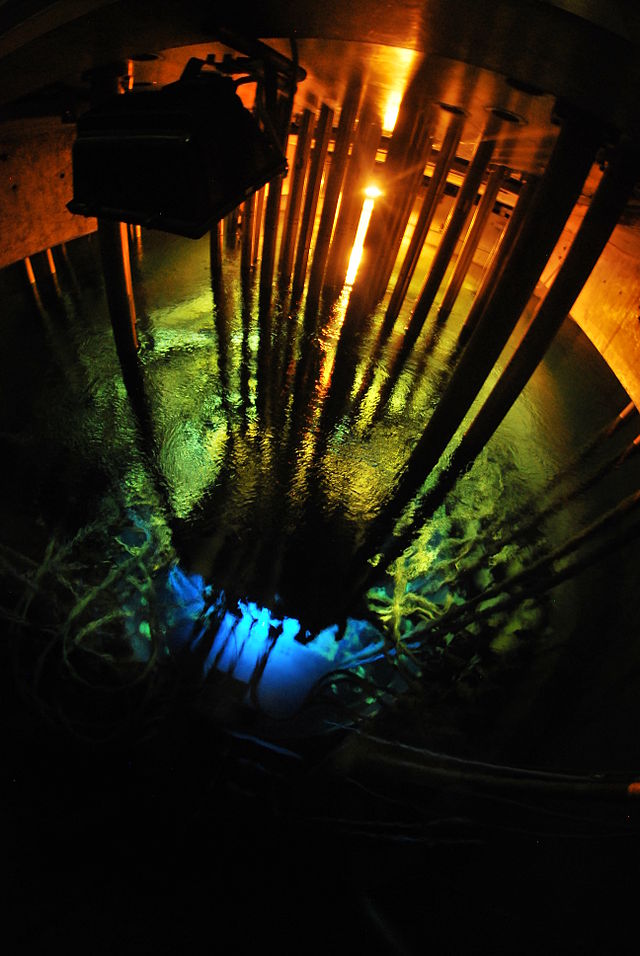Top Qs
Timeline
Chat
Perspective
Maria reactor
From Wikipedia, the free encyclopedia
Remove ads
The Maria reactor is Poland's second nuclear research reactor, commissioned in December 1974, and the only one still in use. The first was the Ewa reactor (EWA), which was commissioned in June 1958 and dismantled by 2002. It is located at Narodowe Centrum Badań Jądrowych - "NCBJ" (National Center for Nuclear Research) at Świerk-Otwock, near Warsaw and named in honor of Maria Skłodowska-Curie. It is the only reactor of Polish design.



Maria is a multifunctional research tool, with a notable application in the production of radioisotopes, research with utilization of neutron beams, neutron therapy, and neutron activation analysis. It operates about 4,000 hours annually, usually in blocks of 100 hours.
Remove ads
Technical description
Summarize
Perspective
The technical details of the reactor are given in the references.[1][2][3]
Maria is a pool-type reactor with a power of 30 MW (thermal).[4] Despite being a pool reactor, it contains channels (aluminum tubes) individually connected to the primary coolant. The water pool provides cooling for elements (e.g., fuel elements) that are not otherwise cooled, and also acts as radiation shielding. Maria uses enriched uranium as fuel (80% enrichment in 235U till 1999, and 36% since). The fuel elements and channels are vertical but arranged conically. Water and beryllium blocks serve as the moderator (70% and 30% of the moderation, respectively). Elements of boron carbide sheathed in aluminum are utilized for control, compensation, and safety. The use of beryllium blocks permits a comparatively large fuel lattice pitch, and consequently large volume for payload targets. There is also a graphite reflector (aluminum sheathed). Maria supplies a neutron flux of 4x1014 n/cm2s (thermal neutrons) and 2x1014 n/cm2s (fast neutrons). There are six horizontal channels for controlled use of neutron beams. There is also a window of lead-containing glass through which the core can be viewed. The reactor is housed in a sealed containment.
Following preparation which started in 2004, Maria was converted to use low-enriched uranium (LEU) fuel by 2012.[2][5]
Remove ads
History
Construction began on June 16, 1970, and the reactor was activated on December 18, 1974. With the shutdown of the Ewa reactor in 1995 it became Poland's only research nuclear reactor.
In 2015, Maria was relicensed for an additional ten years of operation, until 2025. On April 1, 2025, the Maria reactor was temporarily shut down due to the license ending and it will not resume operations until its license is renewed (which will be at the earliest on the 8th of May 2025).[6]
Remove ads
Production of medical radioisotopes
In February 2010, it was announced that Maria would start producing medical isotopes in cooperation with Covidien, to help ease the isotope shortages due to shutdowns of the Canadian NRU reactor and the Dutch Petten nuclear reactor.[7][8]
See also
References
External links
Wikiwand - on
Seamless Wikipedia browsing. On steroids.
Remove ads
